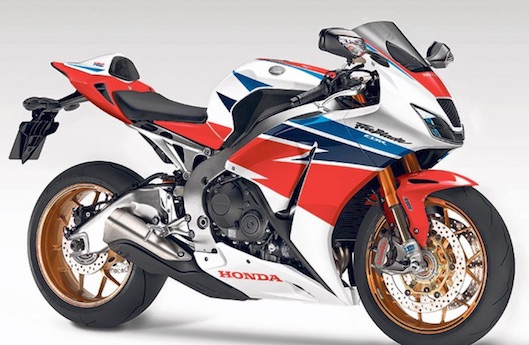Honda CBR900RR Fireblade set a precedent for lightweight superbikes in 1992 when it was introduced, but these days it lags behind the rest of the class, particularly with electronics.
Now the Japanese manufacturer is playing catch-up with its planned 2017 CBR1000RR Fireblade featuring Ohlins semi-active suspension and Bosch Inertial Measurement Unit and ABS.
Despite all that electronic gadgetry, the Fireblade will remain true to its 1992 lightweight mantra, shedding about 8kg to 203kg.
Most of that weight saving will be in moving from their C-ABS which weighs 10kg to the 3.5kg Bosch system used by various competitor bikes.

Meanwhile, the Ohlins system has been specially developed for Honda and is claimed to be more advanced than on the Ducati Panigale 1299 S.
The Fireblade has always been the most rideable of all the superbikes and the new electronic rider aids should help that even further.
Honda isn’t giving away too many other details at the moment, but it promises more power, thanks to a new air intake, airbox, fuel-injection system and less internal engine friction.
Currently, the CBR1000RR has 131kW of power, which is way below competitors such as the Kawasaki ZX-10R with 154.4kW.
There is talk that it will increase power to around 140kW, but it really needs to crack the 200hp (about 150kW) barrier to regain its mantle as the top superbike.
Rumours also persist that Honda will release a V4 version like the limited-edition RC213V-S.
It would be a strange move considering the RC models have all sold out on the pretext that they were a limited edition. It would also crowd their line-up in a sector that is not gaining sales around the world, but dramatically sliding.
The 2017 CBR1000RR is expected to debut at the EICMA motorcycle show in Milan in November.
Meanwhile, we wouldn’t be surprised if the CBR600RR is dropped from their line-up next year due to falling sales and the expense of meeting tough new Euro 4 emission limits for existing models from January 2017.


